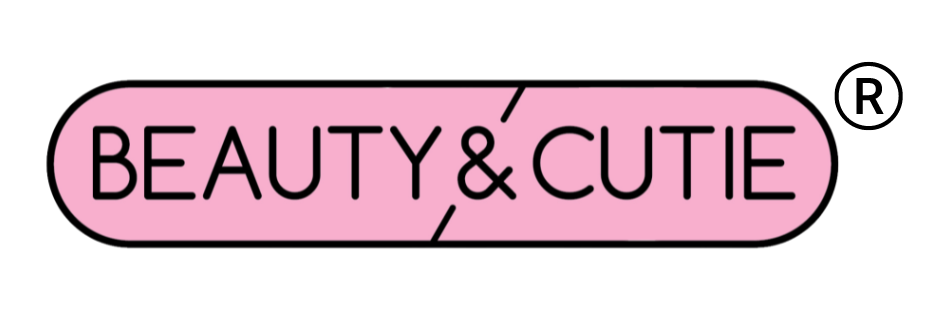
WHAT IS HYALURONIC ACID?
Hyaluronic acid (also sometimes called hyaluronan) is neither a vitamin nor mineral, but actually a carbohydrate that is naturally present in our bodies. From a molecular view, it can be described as a polymer chain made up of repeating units of disaccharides1 (sugars) and therefore has a high molecular weight. Depending upon how it is synthesized in our body, there are different forms of hyaluronic acid distinguished by their molecular chain length2. In humans, the majority of our hyaluronic acid is found in the skin3, but is also prevalent in the eye, the umbilical cord, and the fluids that act as a lubricant for our joints4 (synovial fluids). It has an exceptional affinity for water (it is a highly hydrophilic molecule) and is largely responsible for the moisture content of your skin. It has been described as “nature’s moisturizer”.
Our product uses sodium hyaluronate as the source for hyaluronic acid. It is just the salt of hyaluronic acid. A key difference between hyaluronic acid and sodium hyaluronate is that the molecular weight in the latter is much lower. With a lower molecular weight, which roughly translates into lower molecule size, better penetration5 through the skin layers is achieved6 which helps reap the full benefits of the moisturizing properties of the compound. Although this data refers to topical applications, the same holds true for ingested hyaluronic acid. In this case the compound must pass through the intestinal walls to be bioavailable to your skin. Lower molecular weight versions of hyaluronic acid have been shown to have increased permeability7 and thus be able to travel through your body to the skin and will thus have greater benefit in terms of skin health. Bacteria in the gut may also assist in breaking down high molecular weight versions of hyaluronic acid enabling their transport to the skin8.
There is little guidance by the US FDA, Department of Agriculture or the NIH on guidelines for promoting hyaluronic acid through diet. That being said, there is evidence that the Chinese herb Radix astragali does promote hyaluronic acid production9 in the skin.
The FDA has approved hyaluronic acid as a dermal filler10, while another report has documented its safety for use in cosmetics11.

Beauty & Cutie
Hyaluronic acid is responsible for the moisture content of our skin. Studies show that it can improve skin elasticity, roughness, and wrinkle depths

WHY IS HYALURONIC ACID IN MY PRODUCT?
There are many benefits of hyaluronic acid to your general health. It is especially beneficial for your joints and supplementation with sodium hyaluronate has been found to be effective in treating conditions such as osteoarthritis. In fact, a review of twelve different clinical trials from many different countries is summarized by the conclusion that oral supplementation of hyaluronic acid is highly beneficial in terms of decreasing knee pain12 caused by osteoarthritis. Similar conclusions13 were drawn in another, more recent review.
Hyaluronic acid is also beneficial for the treatment of eye disorders, in particular dry eye syndrome. Often treated with a topical solution of hyaluronic acid, when additional oral supplements were given, the symptoms were treated much more efficiently14.
Hyaluronic acid is also found to have strong beneficial effects in wound healing15, though most of the studies performed to date use topical applications or use dressings pre-loaded16 with the solution. These are also valuable in the treatment of burns17.
WHAT IS THE ROLE OF HYALURONIC ACID FOR HAIR, SKIN AND NAILS?
The most touted benefit of hyaluronic acid in skin is moisturization and anti-wrinkling. It is a key molecule18 in skin aging. In one study19, oral administration of a hyaluronic acid solution resulted in improved skin elasticity, skin hydration, and a decrease in skin roughness and wrinkle depths. A review of six different randomized control trials20 indicated that oral administration of hyaluronic acid led to significant increases in skin moisture and improved facial aging symptoms.

A more recent study looked specifically at the effect of orally administered hyaluronic acid on wrinkles and found that the experimental group showed significantly diminished wrinkles compared with the control (placebo) group along with improved skin lustre and suppleness.
A study on ingested eggshell membranes, which are rich in hyaluronic acid but also contain other beneficial compounds, showed that those taking the supplement exhibited significantly improved facial skin appearance and skin tone21. Hair thickness and growth were also observed to increase, while a reduction in hair breakage was observed. However, there was no obvious benefit to any attribute of the nails (growth, appearance or strength). A more fundamental study has indeed backed the importance of hyaluronic acid on the hair follicle growth cycle22.
A study on ingested eggshell membranes, which are rich in hyaluronic acid but also contain other beneficial compounds, showed that those taking the supplement exhibited significantly improved facial skin appearance and skin tone21. Hair thickness and growth were also observed to increase, while a reduction in hair breakage was observed. However, there was no obvious benefit to any attribute of the nails (growth, appearance or strength). A more fundamental study has indeed backed the importance of hyaluronic acid on the hair follicle growth cycle22.
To summarize, oral supplementation with hyaluronic acid will have its greatest impact on the moisture content of your skin, but there is also evidence to indicate it may have anti-wrinkling effects as well. Evidence has also been presented to suggest it can improve the growth and strength of your hair. Furthermore, if you suffer from arthritis you may find that additional supplementation with hyaluronic acid may improve the health of your joints.
References:
- https://pubmed.ncbi.nlm.nih.gov/27324942/
- https://www.ncbi.nlm.nih.gov/pmc/articles/PMC3583886/
- https://pubmed.ncbi.nlm.nih.gov/9260568/
- https://pubmed.ncbi.nlm.nih.gov/30960626/
- https://pubmed.ncbi.nlm.nih.gov/10730753/
- https://pubmed.ncbi.nlm.nih.gov/22052267/
- https://pubmed.ncbi.nlm.nih.gov/18391466/
- https://pubmed.ncbi.nlm.nih.gov/27982756/
- https://pubmed.ncbi.nlm.nih.gov/19619633/
- https://www.fda.gov/medical-devices/aesthetic-cosmetic-devices/fda-approved-dermal-fillers
- https://pubmed.ncbi.nlm.nih.gov/19636067/
- https://www.ncbi.nlm.nih.gov/pmc/articles/PMC4729158/
- https://www.ncbi.nlm.nih.gov/pmc/articles/PMC5814393/
- https://pubmed.ncbi.nlm.nih.gov/31662894/
- https://pubmed.ncbi.nlm.nih.gov/33800588/
- https://pubmed.ncbi.nlm.nih.gov/32507198/
- https://www.ncbi.nlm.nih.gov/pmc/articles/PMC5012021/
- https://www.ncbi.nlm.nih.gov/pmc/articles/PMC3583886/
- https://pubmed.ncbi.nlm.nih.gov/29228816/
- https://www.ncbi.nlm.nih.gov/pmc/articles/PMC4110621/
- https://pubmed.ncbi.nlm.nih.gov/31904175/
